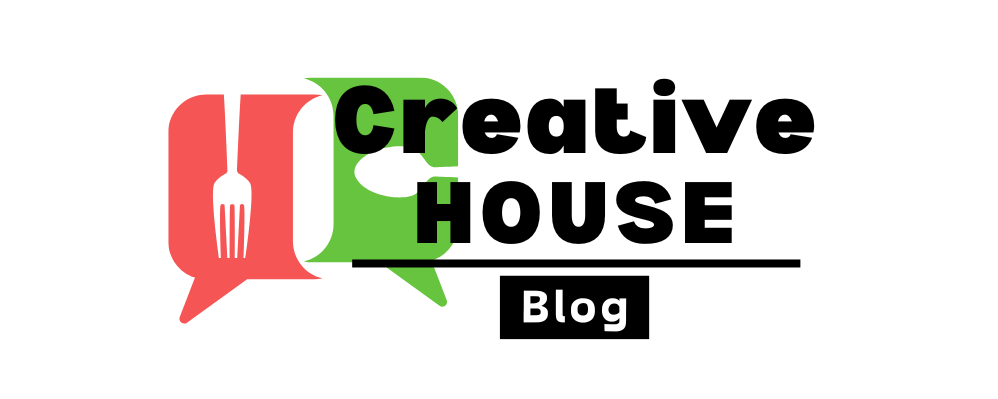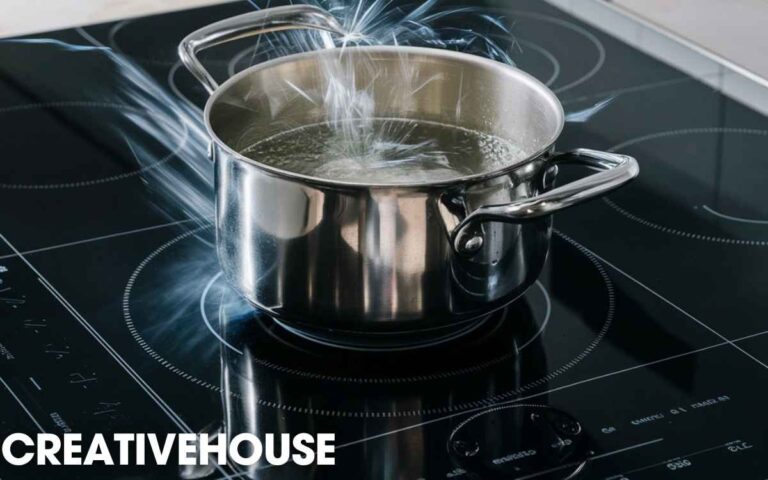Induction stoves, Power-packed performance with a punch of efficiency! With wattage ratings from 1000 to 2500 watts, they might seem power-hungry. But don’t be fooled! Their direct heating method means faster cooking and lower energy consumption.
So, you can whip up your favorite dishes while keeping your electricity bills in check. Now, that’s what we call a win-win! Let’s learn about the details of induction stove power consumption.
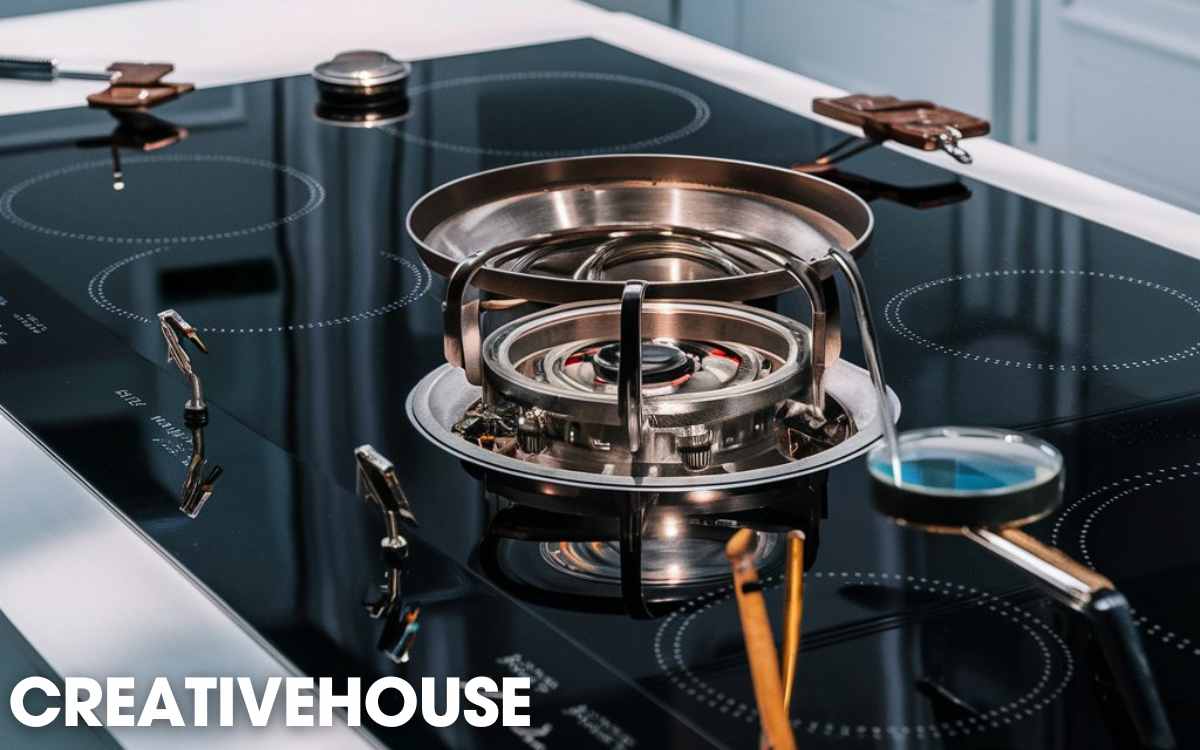
Understanding the Induction Stove Power Usage
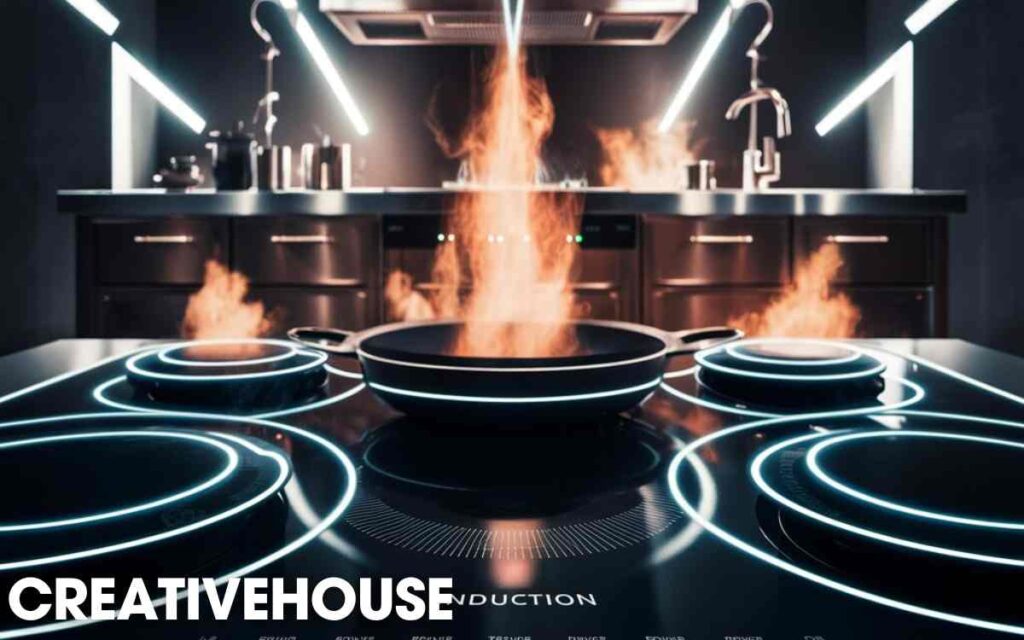
The power consumption of induction cooktops can be determined by examining their specified wattage.
The Watt’s Up
First things first, let’s talk about wattage. In the simplest terms, wattage is a measure of electrical power. Induction stoves are typically rated between 1000 to 2500 watts.
That’s like having a thousand tiny light bulbs all glowing at once! But don’t worry, your induction stove isn’t planning a light show. It’s just cooking up your favorite meal.
A lower wattage might be perfect for simmering your grandma’s secret sauce, while a higher wattage can bring a large pot of water to boil in no time.
Now, you might be wondering, “Does a higher wattage mean it consumes more electricity?” Well, yes and no. While it’s true that a higher wattage means the stove uses more power when it’s on, it also means it can cook food faster.
So, a high-wattage stove might actually be more energy-efficient if it means you’re spending less time cooking.
Electricity Tariff
An electricity tariff refers to the rate plan established by the power company for the distribution of electrical energy to different customer categories. Essentially, it’s the strategy used to bill a consumer for their electricity usage.
The actual rates that a customer is charged are based on their electricity usage. The bill can fluctuate depending on the consumer’s specific needs.
Electricity tariffs, or the cost of electricity, can vary greatly from country to country.
- In Denmark, the cost for a single kilowatt-hour of electricity is around $0.54 USD.
- Germans, on average, are charged about 53 cents (USD) per kilowatt-hour for their electricity usage.
- In the United Kingdom, the rate for electricity is set at $0.47 per kilowatt-hour.
- Italians can expect to pay approximately $0.46 per kilowatt-hour for electricity.
- In Spain, the cost for a kilowatt-hour of electricity is about $0.26.
- Meanwhile, in the United States, people pay nearly a third of what residents in Ireland do for their electricity.
Induction Stove Power Consumption Details
Let’s take a friendly journey into numbers and simple explanations to figure out how much electricity your induction stove uses.
The formula for power consumption is quite simple:
Power Consumption (kWh)=Power Rating (kW)×Usage Time (hours)
This formula tells us that the power consumption of an appliance (like our induction stove) is equal to its power rating multiplied by the time it’s used.
Let’s say you have an induction stove with a power rating of 2000 watts. But wait, our formula needs the power rating in kilowatts. No problem! You just need to divide the wattage by 1000 to convert it to kilowatts. So, your stove has a power rating of 2 kW.
Now, let’s say you use this stove for 1 hour a day. Plugging these values into the formula, we get:
Power Consumption= 2 kW×1 hour = 2 kWh
So, your induction stove consumes 2 kWh of electricity in a day. If you use it every day for a month (let’s say 30 days), the monthly power consumption would be:
Monthly Power Consumption=2 kWh/day×30 days=60 kWh
That’s the equivalent of leaving a 60-watt light bulb on for 1000 hours!
To find out the yearly power consumption, you need to simply multiply this by the number of months in a year:
Yearly Power Consumption=60 kWh/month×12 months=720 kWh
So, if you use your induction stove for an hour every day, it will consume about 720 kWh of electricity in a year.
Now what about the bill?
The cost of electricity can vary greatly depending on where you live, but let’s say for the sake of this example that the average cost of electricity is $0.13 per kWh. To calculate the cost of running your induction stove for a year, you would multiply the yearly power consumption by the cost per kWh:
Yearly Cost=720 kWh×$0.13/kWh=$93.6
So, running a 2000-watt induction stove for an hour every day for a year would add approximately $93.6 to your electricity bill.
Power Consumption Comparison of Gas, Electric, and Induction Stove
Choosing the perfect stove for your kitchen is a big decision, and knowing how much energy it uses is super important.
So, let’s take a closer look at gas, electric, and induction stoves to see how they stack up in terms of energy use.
| Stove type | Power consumption (Watts) | Power source |
Gas Stove | 500 – 2,000 watts per hour | Natural gas or propane |
| Electric Coil | 1500- 2500 watts per hour | Electricity |
| Electric Smooth-top | 1,200 – 3,000 watts per hour | Electricity |
| Induction Stove | 1000- 2,500 watts | Electricity |
In simpler terms, an induction stove uses 5 to 10 percent less energy than a regular electric stove.
And when compared to a gas stove, it’s about three times more efficient because, with induction cooking, less energy is lost to the surrounding air because the cookware itself becomes the source of heat.
Why Induction Stoves Are Efficient?
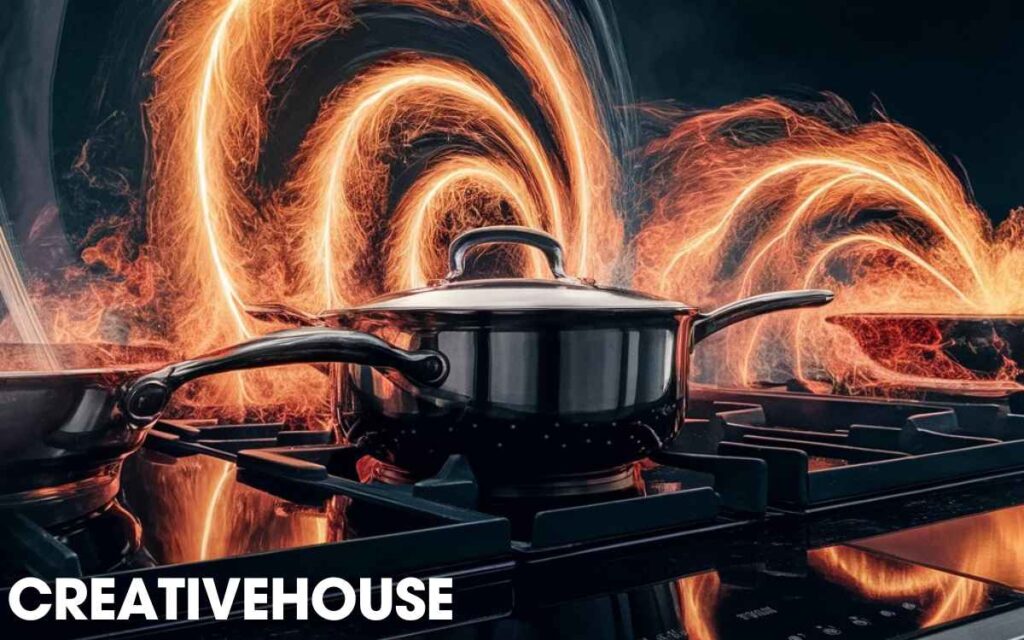
Induction stoves have many advantages that make them a smart option for your cooking needs.
Here are some of them:
Direct Heat Transfer: Induction stoves heat the pot directly using magnetic fields, unlike traditional stoves that heat the air or the stove surface first. This means less energy is wasted heating the air around the pot.
Speed and Responsiveness: Induction stoves heat up and cool down fast, saving you time and making it easier to control the cooking temperature. For instance, water boils quicker on an induction stove than on a gas stove.
Safety and Cleanliness: The surface of an induction stove stays cool while cooking, which reduces the risk of burns and makes it easier to clean. Plus, because the heat is confined to the cookware, there’s less chance of nearby items catching fire.
Energy Efficiency: Induction stoves are considered the most energy-efficient type of stove.
They can deliver up to 90% of the energy they generate to the food in the pan, compared to as little as 38% for gas ranges.
Cookware Compatibility: Induction stoves only work with pots and pans that have a magnetic bottom, like cast iron or stainless steel.
This means you can use any size of pot or pan on the stove, and the induction elements will adjust to it.
This also helps save energy by avoiding heat loss from pots and pans that don’t fit the burners well.
Smart Features: Some induction stoves have features that make them more efficient and easier to use. For example, some models have sensors that can measure the temperature of the pot or pan and change the power level accordingly.
Some also have timers, presets, and safety features that can stop the stove from getting too hot or burning you.
So, in a nutshell, induction stoves are fast, safe, clean, and energy-efficient.
Tips to Reduce Induction Stove Power Consumption

Sure, here’s a more casual way to say the same thing:
Time is Money: Set a timer for each dish you’re cooking. It’s like having a personal sidekick who tells you when your food is perfectly cooked.
The Copper Advantage: Choose a stove with a copper coil. It heats up quicker than other materials, like aluminum. It’s the speedy hare that actually wins the race this time.
Exclusive Cookware: Stick to cookware designed specifically for induction stoves.
Switch Off Swiftly: Turn off the stove as soon as you’re done cooking.
Size Matters: Match the size of your pan to your hotplate. Using a small pan on a large zone is like trying to wear a hat that’s too big – it just doesn’t work.
Keep It Clean: Make sure the bottom of your pan is clean and free from any burn marks.
References
https://worldpopulationreview.com/country-rankings/cost-of-electricity-by-country
https://www.directenergy.com/learning-center/how-much-energy-does-oven-and-electric-stove-use
https://www.jackery.com/blogs/knowledge/how-many-watts-does-a-stove-use
